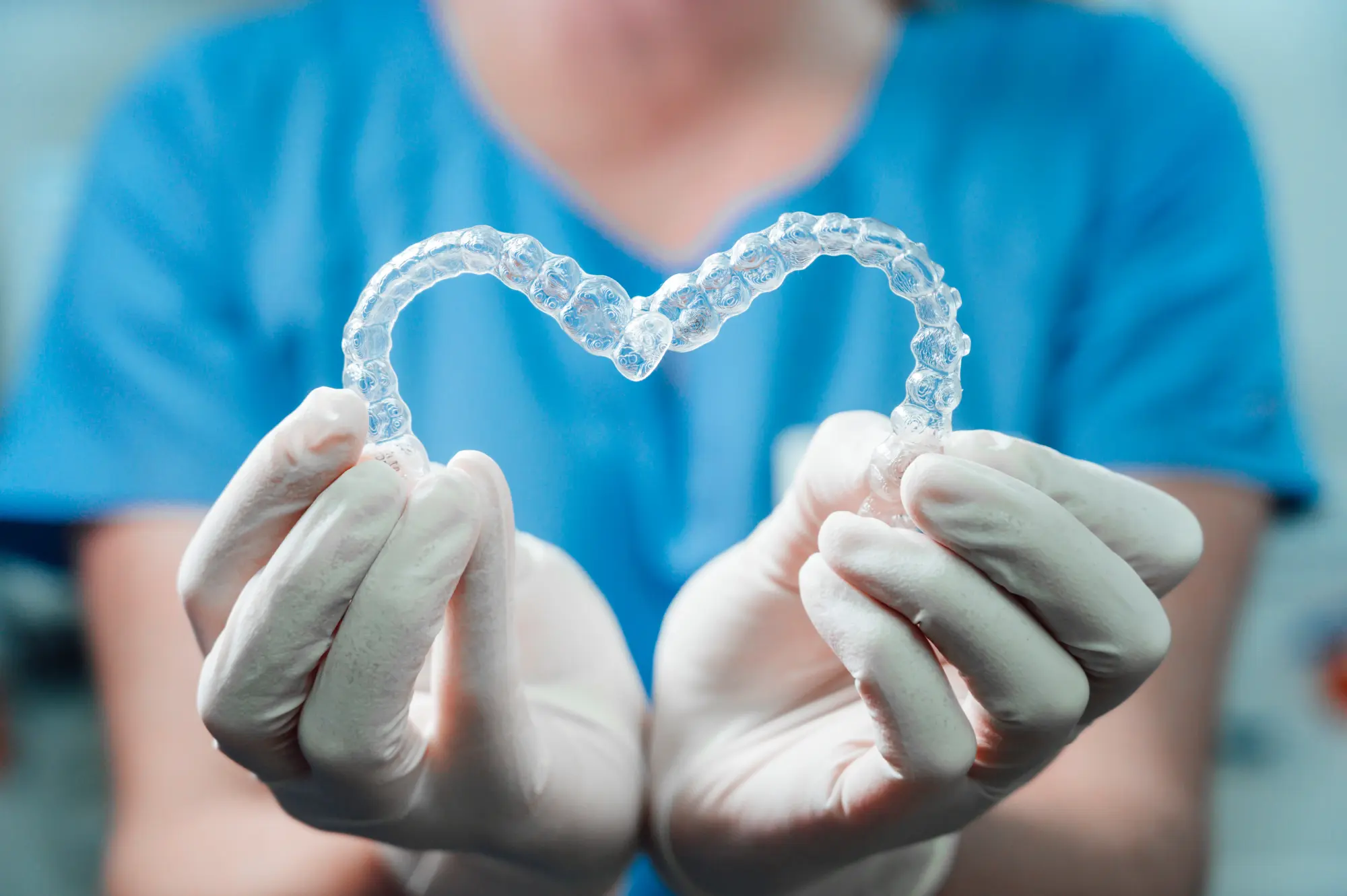
Regular Dental Hygiene Habits
A healthy smile is no secret: if we follow a few simple, daily dental habits, we can keep our teeth and gums in top shape for decades. While it is important to complete regular check-ups with your dentist, the way we take care of our teeth on a daily basis will have a major impact on our long-term dental health and function. Effective dental hygiene regimens combine tooth brushing and flossing with the use of a mouthwash.
While it can feel tedious to brush, floss, and rinse everyday, these habits maintain our ability to chew, swallow, and smile comfortably.
Aside from our oral comfort, regular brushing and flossing also prevent a variety of dental health issues from developing, such as gingivitis. It is important to maintain these daily habits in order to prevent plaque and tartar from developing on our teeth. A buildup of plaque can increase a patient’s risk of gingivitis, which can develop into periodontitis, leading to tooth loss and increased risk of heart attack and stroke.
When choosing your toothbrush, toothpaste, mouthwash, or floss, look for the American Dental Association Seal of Acceptance. Each product is tested according to standards in order to guarantee they are effective and safe. If you are unsure what dental hygiene options are right for you, Dr. Ahmed are happy to discuss your questions with you.
When purchasing your oral hygiene products, and planning your daily dental care, consider following the guidelines below.
Your Best Toothbrush
The goal of toothbrushing is to remove plaque from your teeth and reduce your chance of developing gingivitis.
- Patients are advised to brush their teeth twice a day, for at least two minutes at a time. Make a point to brush along the teeth and gums at a 45 degree angle, as well as up and down on each tooth.
- Brush vertically up and down along the inside of the front teeth, too. It is important to reach every tooth surface.
- When you have finished brushing your teeth, rinse your brush completely. Toothbrushes should be stored upright, in a container which allows them to air dry.
- Replace your toothbrush head every three to four months, or sooner if the bristles look bent and worn out.
When shopping for a toothbrush, look for the ADA Seal of Acceptance. While toothbrushes are made with hard, medium, and soft bristles, we recommend patients choose a toothbrush with soft bristles. Softer bristles reduce the risk of abrasive damage to the gums, which can increase the risk of a gingival infection. Studies have shown that different lengths and angles of bristles are a more effective brush design than bristles in a simple uniform line. However, it is also important to consider the size of your toothbrush. You will want to be able to reach around and into the back of your mouth, so be sure to choose a size of toothbrush that fits your body most comfortably.
Manual or Powered Toothbrush?
The ADA lists both manual and powered toothbrushes as effective options for teeth cleaning. Powered toothbrushes may rotate and oscillate, move in a circular motion, move side to side, or use ultrasonic waves to effectively move plaque from the teeth. An electric or sonic toothbrush can be a convenient tool for elderly patients who be struggling with arthritis and other dexterity issues.
Some patients have expressed concern about their toothbrush sitting out in the open air of their bathroom. According to the ADA, toothbrushes can sometimes be shown to contain a small amount of bacteria; however, studies have yet to find evidence that this has any negative impact on a person’s health. Patients who are interested in sanitizing their toothbrush can soak it in mouthwash or a 3% hydrogen peroxide solution. Do not soak the brush for longer than 15 minutes, as it can damage the bristles of the brush. The FDA has approved certain toothbrushing sanitizing devices, as well. Patients should not put their toothbrush in the microwave or dishwasher, as the heat may damage the brush.
Patients are invited to share any questions they may have about toothbrush types and care with Dr. Ahmed.
Toothpaste: What’s Right for You?
The American Dental Association stresses that unless a toothpaste contains fluoride, it does not protect the teeth from developing cavities. In fact, the ADA will not give its seal of approval unless a toothpaste contains fluoride. There is currently no other ingredient used in toothpaste that is proven to prevent cavities in the way that fluoride does. Fluoride toothpaste protects the teeth long after you brush, due to the fact that the fluoride remains in your biofilm fluid. Fluoride offers a “topical benefit,” remaining on the teeth to decrease the risk of cavities and remineralization.
Brushing for Children
Children should also use a fluoride toothpaste. However, it is important that they do not swallow the fluoride. When children use fluoride toothpaste, they should only receive a small amount. It is important that once children’s teeth come in, children under the age of three should have their teeth brushed with only a rice-size amount of fluoride toothpaste. Children who are between the ages of three and six should only brush with a pea-sized amount of fluoride toothpaste.
Toothpaste flavor and texture will depend on patient preference. The ADA does not approve toothpastes which contain any flavoring agent that could contribute to tooth decay.
The type of toothpaste you select will also depend on any other dental concerns which you would like to address. In addition to fighting cavities, your toothpaste can help you reduce your tooth sensitivity, control your tartar, and whiten your teeth.
If you have any more questions about what type of toothpaste is right for you and your dental needs, call Old Town Smiles today to talk to our helpful staff.
Flossing: What’s the Skinny?
Flossing is a highly effective way to remove stubborn plaque from our teeth. As tedious as it may feel at first, flossing daily will majorly reduce your chance of cavities and gum disease.
There are two types of acceptable floss, nylon and PTFE floss. Nylon is made of multiple small strands, while PTFE floss is all one fiber. While both types of floss will remove plaque, PTFE floss is less likely to shred or break.
- In order to floss most effectively, take roughly a foot and a half of floss.
- Wrap the ends of the strand around your forefinger and thumb until there are only a few inches of floss between your hands.
- Gently work the floss between your teeth and curve it around the bottom of your teeth. Make sure the floss reaches beneath your gum line.
- Gently work the floss up and out from between the teeth. Use clean sections of floss as you move between teeth.
Mouthwash: Your Options
Daily use of a bacteria-fighting mouthwash will prevent a build-up of bacteria in your mouth, which could lead to gingivitis if not addressed.
Most patients prefer a mouthwash that does not contain alcohol, as it can dry out the oral cavity, resulting in dry mouth. Children under the age of 6 should definitely not use an mouthwash which contains alcohol. The type of mouthwash you choose may depend on your preferred flavor of rinse, as well as what dental concern you want your mouthwash to target. For example, some rinses address tooth sensitivity, while others may additionally strengthen the teeth with fluoride.
Mouthwash, while a valuable way to prevent the development of gingivitis, will not maintain your dental health on its own. A regular routine of brushing, flossing, and mouthwash-use will not only keep you feeling fresh, they will keep your gums and teeth healthy for your foreseeable future.
Team Up With Your Dentist
Long-term dental health relies on a combination of daily oral care, as well as regular check-ups with your dentist. These appointments verify that your teeth are at their healthiest and will catch any developing issues before they risk getting worse. In order to see your strongest teeth and healthiest gums, consider scheduling a regular dental cleaning and check-up twice a year, if not more.
Our highly-trained dental hygienists will polish your teeth, as well as carefully remove any tartar that may have built up. Dr. Ahmed will inspect for signs of gum disease, as well as check your teeth for cracks and cavities. If any issue is detected, we will discuss the safest, most comfortable solutions with you.
At Old Town Smiles, we are here to help you achieve your healthiest smile! If you have any questions about what dental hygiene products are right for you, please do not hesitate to call our office.















.jpeg)












